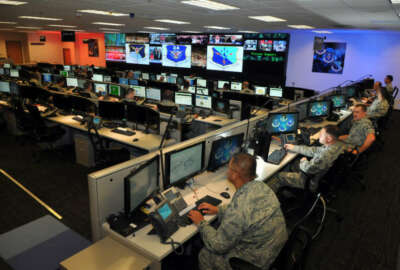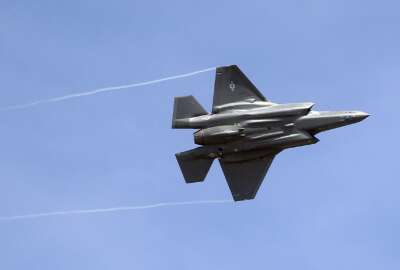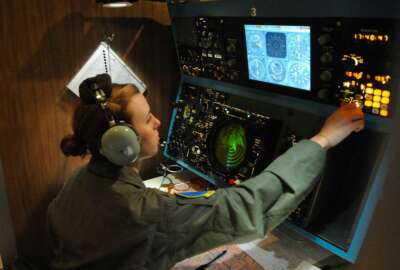
Building planes like iPhones: How the Air Force can adapt to rapidly-changing technology
The Air Force may be looking to adapt a mid-20th century program to modern technologies in order to produce it’s sixth-gen fighter plane.
The Air Force may be looking to adapt a mid-20th century program to modern technologies in order to produce it’s sixth-generation fighter plane.
The current model for designing and building airplanes doesn’t put them out fast enough to keep up with technology. So the Air Force is considering shifting its goals from an end-state product to a continuous process of rapid upgradability and adaptability.
“That’s not an old idea for the Air Force. In the 1940s airplanes came out every year, every other year,” Will Roper, assistant secretary of acquisition for the Air Force, told the Federal Drive with Tom Temin. “But because airplanes became more and more complicated — programs like the F-15, the F-35 have major technology advances on them — they’ve taken a long time because there are many different things, from the radar to the stealth to the weapon, that all have to progress or it doesn’t add up to a dominant fighter. Well, that slowed down the pace at which new programs are created. It’s gotten us in the habit of thinking that the moves in the game we’re playing with our adversaries are decades apart.”
Part of this is due to the old Cold War paradigm. Essentially, because intelligence on the Soviet Union was so good, the Air Force knew exactly what technologies its primary enemy was working on. So it wasn’t hard for the Air Force to know what the technology would be like 10 years in the future, and how to compete.
But no one knows what the technology of 2030 will look like, since it’s commercially driven. So now it becomes a race to develop and field the newest technologies the fastest in order to maintain air dominance.
“We’re shifting that chess model where the games took a long time,” Roper said. “This is more like speed chess, we’ve got to move fast. And it’s better to make a good move fast than to make a perfect move too late.”
That’s why the Air Force is looking at its old Century series as a potential model. In the 1950s and -60s, new aircraft within the Century series came out every couple of years, adapted slightly to integrate new technologies or capabilities, like an upgraded radar.
Roper says the Air Force should be using that kind of model, but adapted for a digital world. This concept would have to embrace what Roper called the “Holy Trinity of tech” that allows for rapid building and adaptation: open architecture, digital engineering and agile development.
Open architecture is necessary so that multiple companies can compete on various parts of the aircraft. Very few vendors can afford to compete on aircraft currently, because they bid on designs at a loss. The expectation is that if they win, they’ll make the profit off of the following 30 years of long-term sustainment, which, combined with logistics, makes up 70% of the money spent on an aircraft system. That’s just not a good business model, Roper said.
Related Stories
And that means encouraging more companies to stay in aircraft design, by making it financially feasible for them to do so.
And digital engineering means modeling and testing everything virtually before going into actual physical production. And that doesn’t just mean the airplane. Roper said he should be able to put on a VR headset and walk through the production line before it even exists. Using virtual reality to model the design, production and sustainment of its next generation of fighters and bombers would let the Air Force tackle the entire lifecycle cost of the plane at once, not just the initial 30%.
“But you could imagine that, just like iPhones spiral from the eight to the nine to the 10, keeping a lot of commonality and how your apps interface with it, how your data interfaces with it,” Roper said. “Basically, the way you interface with it doesn’t have to fundamentally change just because your phone did. We could build airplanes that way.”
Copyright © 2024 Federal News Network. All rights reserved. This website is not intended for users located within the European Economic Area.
Daisy Thornton is Federal News Network’s digital managing editor. In addition to her editing responsibilities, she covers federal management, workforce and technology issues. She is also the commentary editor; email her your letters to the editor and pitches for contributed bylines.
Follow @dthorntonWFED





